Support from Fans: Sydney’s Swami Army Rallies for India

Even in international contests, the Indian cricket team continues to garner unmatched crowd support, and this is evident at the Sydney Cricket Ground (SCG) during the fifth Test of the Border-Gavaskar Trophy. The Indian population in Sydney, especially from the thriving neighborhood of “Little India,” has shown up in force, generating an exciting environment that reflects the passion of an Indian home game. The Role of the Swami Army An important factor in motivating supporters for the game has been the Swami Army, an international organization of Indian cricket fans. The Swami Army has established a presence at the SCG thanks to their vibrant costumes, upbeat chants, and unshakable devotion to the team. Even during difficult parts of the game, the Indian players have benefited from their synchronized support, which includes drumming, chanting, and coordinated cheering. Travel from “Little India” Huge devotion has been demonstrated by supporters of the “Little India” sector in Harris Park, a Sydney suburb well-known for its Indian shops, cuisine, and culture. The Daily Telegraph said that large crowds of fans, many of whom were dressed in traditional Indian garb and brandishing the tricolor flag, made their way to the SCG. This fan migration highlights their love for the game as well as their sense of solidarity and cultural pride. Creating a ‘Home Game’ Atmosphere The Indian fans have managed to create a near-home game experience despite the distance. The SCG feels like a little version of Wankhede or Eden Gardens as cheers of “Jeetega bhai jeetega, India jeetega!” (India will win!) echo through the stands. For Indian players, this environment has frequently been a psychological advantage, enabling them to feel encouraged and supported in unfamiliar surroundings. Impact on the Team Indian athletes have frequently recognized how important fan support is to their performances. Jasprit Bumrah, the team’s stand-in captain, thanked the visiting fans and emphasized how their presence boosts morale, particularly during a crucial game like this one. The players’ actions, including recognizing the audience following a crucial wicket or boundary, highlight the bond and respect that exist between the team and its supporters. High Stakes for Fans and Players Both the Indian team and their supporters will be greatly impacted by the result of this Test match. Australia currently leads the series 2-1, so India needs to win in Sydney to tie the series and keep the coveted Border-Gavaskar Trophy. Aware of the stakes, fans enthusiastically cheer on the squad during every practice in the hopes that their zeal will motivate the players to give it their all. Key Storylines: Bumrah and Sharma Two major plot points that fans are most interested in are Jasprit Bumrah’s health and Rohit Sharma’s future. Concerns have been raised regarding Bumrah’s availability for the rest of the game after he left the field on Day 2 for medical scans. Supporters are split over Rohit Sharma’s decision to rest for the match, some doubt his dedication, while others defend it as a calculated move for the team’s long-term success. Conclusion Sydney’s Indian cricket supporters have once again demonstrated that their love for the game knows no bounds. They have given the squad a sense of home advantage by transforming the SCG into a hive of Indian passion through their undying support, ethnic pride, and contagious enthusiasm. The Indian squad will surely find strength in this incredible display of unity as the game progresses, hoping to give their supporters a memorable performance and, eventually, a series-tying win in return.
Captaincy Update: Disputation Arises Due to Rohit Sharma’s Absence
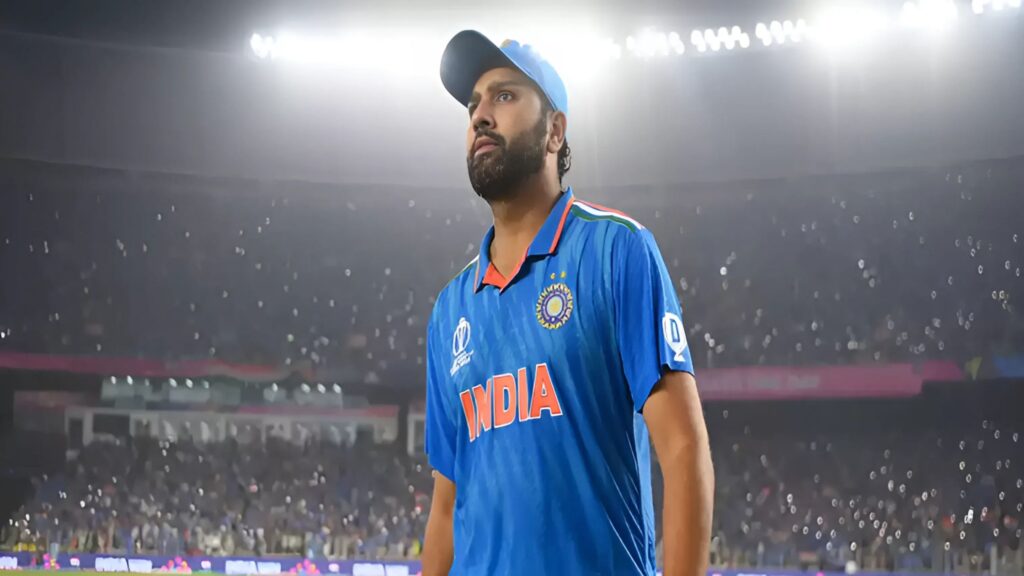
There has been much discussion about regular Indian captain Rohit Sharma’s absence from the pivotal fifth Test of the Border-Gavaskar Trophy match against Australia. Although Sharma formally “opted to rest,” the circumstances and timing of this choice have drawn a great deal of attention and conjecture. Official Explanation According to the Board of Control for Cricket in India (BCCI), Sharma retired because of “workload management.” Despite being prevalent in contemporary cricket, this justification has drawn criticism due to the significance of the game. This match is crucial for India to keep the Border-Gavaskar Trophy since they are now behind 2-1 in the series. Supporters and experts contend that it is quite uncommon for a captain to skip such a big match. Speculation of Poor Form Sharma’s recent batting difficulties are contributing to the debate. His leadership choices have been questioned, and his performances in the current series have been lackluster. Critics speculate that rather than being a conscious choice, the “rest” may be a tactful method to push him aside because of his recent form drop. Discussions over his suitability as a top-order batsman in Test cricket were further heightened by his removal in the fourth Test, where he was dismissed after recording single-figure scores in both innings. Retirement Rumors There has also been an increase in discussion on Sharma’s prospects for playing Test cricket. Sharma is one of the team’s veteran players at 37 years old. His patchy performances, fitness issues, and the rise of younger players looking to make a name for themselves have all contributed to rumors that he may retire. According to some experts and former cricket players, this game may mark the start of the end of his Test career, as the team management may be getting ready for a change in leadership. Criticism from Fans and Experts The choice has come under heavy fire, especially from supporters and former players who argue that a captain should guide the squad during crucial situations. Leading cricket commentators have referred to the action as “unprecedented” and “a blow to the spirit of leadership.” Many people believe that even if Sharma was having trouble, his presence on the team may have given younger players, in particular, moral support and direction. The Future of Indian Captaincy Jasprit Bumrah took over as the team’s captain in Sharma’s absence. Despite Bumrah’s demonstrated leadership abilities, the choice calls into doubt India’s long-term captaincy ambitions. Some critics claim that the Indian team’s recent experimentation with many captains across formats has resulted in instability. Public Sentiment Sharma’s absence has elicited strong emotions from fans, many of whom have taken to social media to vent their frustration and rage. Others have supported the choice, arguing that Sharma could be better off standing back and evaluating his future. Conclusion Debate has erupted over Rohit Sharma’s choice to “rest” during a pivotal Test. Although workload management is mentioned in the official explanation, the underlying problems of age, shape, and fitness appear to tell a more nuanced tale. All eyes will be on Sharma and the BCCI to provide clarity on the captain’s future and the direction of Indian Test cricket as this series comes to an end.
Day 2 of the Fifth Test between Australia and India: A Fair Match Develops

Cricket fans were on the edge of their seats throughout the emotional roller-coaster that was the second day of the fifth and final Test match between Australia and India at the Sydney Cricket Ground. Crucial events throughout the day influenced the course of the match, leaving it precariously balanced. Here is a thorough breakdown of the main events of the day. Injury Concerns for India: Jasprit Bumrah Exits Early After midday, India’s bowling leader and acting captain, Jasprit Bumrah, departed the field for unidentified scans at a nearby hospital, severely hurting their chances. Bumrah has been the foundation of India’s bowling attack during this series, thus his absence raises questions about the team’s future. Bumrah earlier in the day added another feather to his cap when he got rid of Marnus Labuschagne, Australia’s most productive batter. This increased his series total to an incredible 32 wickets at a 13.06 average. India has remained competitive in the series thanks in large part to his scorching bursts. His early departure, though, raises questions about India’s capacity to keep up pressure on the Australian batting order in the periods that follow. Although Bumrah’s condition has not yet been officially updated by the Indian team management, his absence can prove to be crucial to the outcome of the game. In a match where every run and wicket matters, Bumrah’s absence would be a serious setback to India’s bowling arsenal due to his deadly yorkers and ability to swing the ball both ways. Australian Innings: A Tale of Collapse After starting their innings with hope, Australia suffered a devastating batting collapse and was dismissed for a meagre 181 runs. Usman Khawaja and Sam Konstas, the openers, gave the innings a promising start. However, under constant assault from India’s bowlers, the middle order collapsed. In Bumrah’s absence, Mohammed Shami commanded India’s bowling unit, which produced a well-organized performance. Australia’s innings never got going thanks to Shami’s ability to take advantage of the circumstances and the potent periods of spinners Ravindra Jadeja and Ravichandran Ashwin. Despite a few brilliant moments from the Australian batters, the team’s failure to form alliances paid them dearly. Cricket commentators and fans questioned Australia’s strategy after their collapse was characterized by a lack of effort and a string of bad shot choices. The game reached a thrilling point where neither team had a clear advantage because of the team’s 181-run total. The Road Ahead Given how evenly matched the match is, the third day seems to be pivotal. In their second innings, India will want to take advantage of their disciplined bowling performance and establish a significant lead. But there is a lot of ambiguity over Bumrah’s availability. Australia, on the other hand, will try to get back together and take advantage of any holes in India’s team to win. The match provides evidence of the unpredictable and alluring nature of Test cricket when the outcome of a single session can change the course of the match. The next chapter in this captivating match, which has already brought drama, skill, and intensity in equal measure, is highly anticipated by fans worldwide.
First Day Performance: India’s Struggles at the SCG

The Indian batting lineup faced difficulties on the opening day of the fifth Test match between Australia and India at the Sydney Cricket Ground. India was behind early in the game after winning the toss and choosing to bat on what looked to be a batting-friendly surface. The scoreboard showed a dangerous 107 for four at tea, and the visitors had a lot of work ahead of them to steady their innings. Early Wickets: A Troubled Start India’s top-order collapse was a significant setback. KL Rahul: Rahul appeared hesitant against the Australian speed attack in the first innings. He was edged near the slip cordon by Josh Hazlewood’s probing ball. His early ejection set the stage for India’s difficult day. Yashasvi Jaiswal: The youthful opener, who has demonstrated potential in previous appearances, found it difficult to manage the bounce and swing. Pat Cummins hit Jaiswal with a vicious ins-winger, revealing India’s middle order sooner than expected. Shubman Gill:Gill made his comeback after rejoining the team in place of Rohit Sharma, but it was cut short as he attempted an adventurous shot off Mitchell Starc but was caught in the covers. His dismissal demonstrated how India’s batsmen were under pressure to score runs quickly on a challenging day. Virat Kohli: With his expertise and ability to lead an innings, a lot was expected of Kohli. But the Indian mainstay was outplayed by Nathan Lyon’s steady off-spin, which trapped him LBW for a low score. The team suffered a psychological damage when Kohli left. Resistance from the Middle Order India’s innings was on the verge of collapse at 64 for four. Nonetheless, Rishabh Pant and Ravindra Jadeja started the reconstruction process together in a careful yet successful manner. Rishabh Pant: In order to face Australia’s disciplined bowling, Pant, who is known for his aggressive stroke play, first suppressed his impulses. He started rotating the strike and identifying sporadic limits as the session went on to make sure the scoreboard ticked over. Ravindra Jadeja: Jadeja’s characteristic tenacity enhanced Pant’s efforts. Despite not being an attacking batsman by nature, he shown the ability to grind out runs under pressure. In order to prepare for a possible counterattack during the following session, Jadeja concentrated on establishing steadiness. Australia’s Dominant Bowling Australia’s bowlers were clinical in their execution, maintaining tight lines and exploiting the conditions to trouble India’s batsmen. Pat Cummins: Leading from the front, the Australian captain produced bounce and speed while retaining incredible accuracy. The tone of the day was set by his early breakthrough. Josh Hazlewood: Hazlewood was successful in troubling the Indian batters by removing movement from the seam with his persistent nagging. Mitchell Starc: Australia’s offense gained a new dimension because to Starc’s ability to swing the ball quickly, which made things challenging for the visitors. Nathan Lyon: The seasoned off-spinner targeted the rough areas outside the right-hander’s off-stump with a probing spell. His accuracy and cunning were demonstrated when he dismissed Virat Kohli. Looking Ahead At the crease, India will try to amass a respectable first-innings total with Pant and Jade-ja. Whether India can bounce back from their early defeats or if Australia will continue to dominate the match will be determined by the outcome of the second session. In order to overcome the constant pressure from Australia’s elite bowling attack, the Indian batsmen must strike a balance between defense and strategic assault.The play of the day brought to light the difficulties of Test cricket, where early innovations have the power to significantly alter the course of events. India’s prospects in this pivotal game will depend on their capacity to react.
Rohit Sharma’s Absence: A Turning Point in Indian Cricket
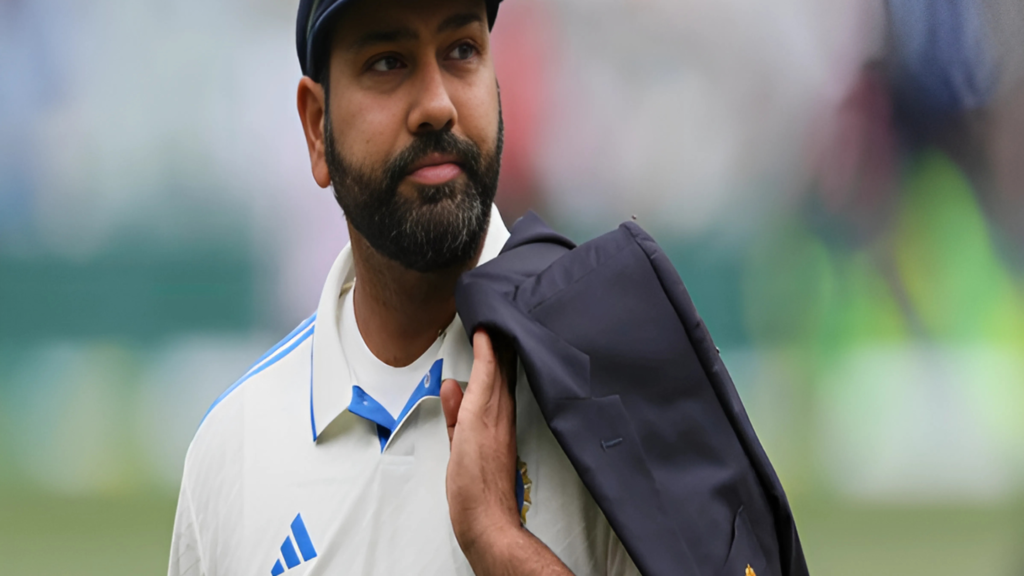
One of India’s most successful and fashionable batters, Rohit Sharma, has chosen to skip the fifth and final Test match in the Border-Gavaskar Trophy against Australia at the Sydney Cricket Ground. Although this decision is officially referred to as “rest,” it comes amid growing criticism of Sharma’s recent performances and his prospects for playing in the game’s longest format. Declining Form: A Cause for Concern Rohit Sharma hasn’t played well in Test cricket lately. He has only scored 31 runs in his last five innings, bringing his yearly average down to a pitiful 24.52, which is far lower than his career average of 46.23. In addition to jeopardizing India’s top-order consistency, this slump in form has sparked concerns about Sharma’s capacity to adjust to the demands of Test cricket in difficult international settings. Jasprit Bumrah Steps Up Fast bowler Jasprit Bumrah has assumed the role of captain in Sharma’s absence. This is a pivotal moment in Indian cricket because Bumrah, who is best renowned for his superb bowling abilities, is now expected to lead the team under pressure. Bumrah’s ability to lead will be put to the test, especially because India wants to draw the series with a strong Australian team. Shubman Gill’s Opportunity Sharma’s absence has been filled with the addition of Shubman Gill, the gifted young opener. India’s emphasis on developing the next generation of players is demonstrated by Gill’s inclusion. Gill is renowned for his poise and deft stroke play, and his performance in this game could have a big effect on his status in the Test squad. Speculation About Retirement Speculation regarding Sharma’s Test career has increased as a result of his decision to rest for this important match. Sharma, who is 37 years old, is one of the veteran players on the Indian team. Discussions over whether he should leave Test cricket to concentrate on shorter forms, where his skills are still essential, have arisen as a result of his recent difficulties and India’s expanding pool of youthful talent. Leadership Dynamics Additionally, Sharma’s absence highlights the dynamics of team leadership. India seems to be going through a transitional period with Bumrah filling in and players like KL Rahul and Rishabh Pant being considered as possible future captains. The team’s course for the upcoming years will probably be influenced by the management’s choices made during this time. A Strategic Move or a Sign of Decline? Others see Sharma’s choice to take a break as a sign of dwindling confidence and possible recognition of his diminishing efficacy in Test cricket, while others see it as a calculated move to recover for upcoming difficulties. His withdrawal from this important game may serve as a clue to the fans and selectors about the changing priorities of one of India’s most renowned cricket players.The focus is still on India’s ability to overcome this obstacle without their seasoned skipper as the game progresses. There is little doubt that Sharma’s final remarks or choice about his future will have a long-term effect on Indian cricket.
Injury Concerns: India’s Bowling Adjustments and Akash Deep’s Absence
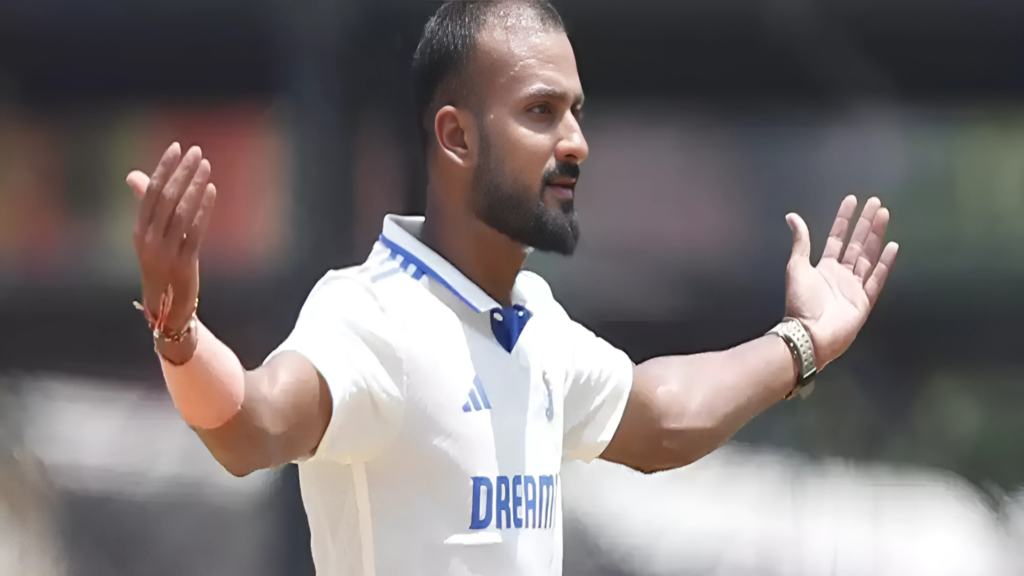
The absence of fast bowler Akash Deep has severely hampered India’s preparations for the pivotal fifth Test match against Australia at the Sydney Cricket Ground. The teenage bowler is out due to a back ailment, which further complicates matters for an Indian team already under pressure after losing the series 2-1. Akash Deep’s Impact and Promise Despite being relatively fresh to the Test scene, Akash Deep has played a crucial role in India’s pace attack throughout the current series. He has made significant breakthroughs, especially in the middle overs, and is renowned for his ability to produce late swing while maintaining constant line and length. He is an important part of India’s bowling strategy because of his quick pace and cunning bouncers, which have caused problems for Australian batsmen.Despite making few outings, Deep contributed to the series with timely wickets and disciplined periods. His loss creates a void in the pace department’s skill set as well as the variety he offered. India’s Bowling Lineup Without Akash Deep The injury forces India to reconfigure their bowling attack, and head coach Gautam Gambhir faces a difficult decision in selecting a replacement. Options under consideration include: Navdeep Saini: Saini, a seasoned domestic cricket player with previous international experience, might be the obvious choice. He is a serious candidate because of his express pace bowling abilities and experience with Australian conditions. Mukesh Kumar: Mukesh Kumar provides a more cautious choice and is renowned for his accuracy and ability to take advantage of seam-friendly conditions. Whether or not the team management values aggressiveness control will determine whether or not he is included. Shardul Thakur: With his versatility, Thakur, the “Lord” of Indian cricket, offers two advantages. His ability to take wickets when it matters most and his depth as a batsman could tip the scales in his favor. Jaydev Unadkat: Unadkat, a left-arm pacer, might be a wildcard choice if the SCG pitch is more conducive to spinners or slower bowlers. Uneven bounce could be exploited by his special angle of attack, especially on a wearing surface. Gambhir’s Confidence in the Team Gambhir is still upbeat about the team’s chances in the final Test despite the loss. He stressed to reporters that the team is ready to adjust and that injuries are a natural part of playing international cricket.”Every player in this team can step up when the need arises, and we have a strong bench. Although Akash has been a crucial member of our team, we have faith that whoever steps in will give their all,” Gambhir said. Strategic Implications of the Injury Increased Pressure on Senior Bowlers: Senior pacers like Mohammed Shami and Jasprit Bumrah will have to take on more responsibility if Deep is not available. It will be crucial whether they can deliver with both the old and new ball. Spin Duo’s Role: It has long been known that the SCG pitch helps spinners as the game goes on. This could lead to India depending more on Ravichandran Ashwin and Ravindra Jadeja for both containment and breakthroughs. Batting Depth: India’s lower-order batting, which has been a weak point in the series, might be strengthened if they choose an all-round player like Thakur. The Bigger Picture Since injuries are frequently viewed as opportunities disguised, this could be a chance for a rising bowler to establish themselves on a major platform. This Test will act as a litmus test for the depth of talent in the team, as India’s bench strength has been a topic of discussion in recent years. Conclusion India’s preparations for the last Test are definitely made more difficult by Akash Deep’s absence. But it also gives the group a chance to show that they are resilient and flexible. With Gambhir’s assurance and the breadth of skill at their disposal, India will try to get beyond this obstacle and put up a show that will tie the series.
An in-depth analysis of Rohit Sharma’s involvement in the Sydney Test regarding captaincy uncertainty

All eyes will be on India’s captain, Rohit Sharma, as they prepare for the pivotal fifth Test match against Australia at the Sydney Cricket Ground. There is a lot of conjecture around Sharma’s inclusion in the starting lineup for this crucial match. Sharma’s recent performance, strategic concerns, and evasive remarks from the team management all contribute to this uncertainty. Coach Gambhir’s Strategic Ambiguity During a news conference prior to the game, Indian head coach Gautam Gambhir refused to confirm Sharma’s starting position. When questioned, Gambhir insisted that the announcement will be made closer to the start of play and that the choice would be based on the SC-G’s pitch conditions. This strategy fits with Gambhir’s well-known tendency to keep opposing teams guessing, but it has also left supporters and observers wondering why there is so much uncertainty. Sharma’s Struggling Form In the current series, Rohit Sharma, who is considered to be one of the most graceful stroke-makers in contemporary cricket, has been having difficulty turning beginnings into significant contributions. In contrast to his lifetime average of 45.40, his batting average in Test cricket has dropped to 24.52 during the last 12 months. Given that India is now behind 2-1 in the series, this deterioration has received harsh criticism. Sharma has only reached one fifty in four Test matches in the current series against Australia, and his dismissals have frequently occurred at pivotal moments, forcing the middle order to rebuild under duress. Critics claim that Sharma’s slump has affected his on-field judgment as captain in addition to hurting India’s batting depth. Strategic Considerations and the Bigger Picture The manager of the team must perform a careful balancing act. Sharma’s leadership and experience are vital, but his lack of runs has made other players, including Shubman Gill and KL Rahul, the center of attention. A younger leader might take over if Sharma is rested, providing an indication of India’s possible captaincy alternatives in the future. But in cricket, dropping a captain in the middle of a series—especially in a game that is crucial—is a daring and uncommon move. It might be a wake-up call for veteran players who aren’t playing up to par, but it also runs the danger of upsetting the dynamics of the team. Public and Media Reactions There has been a lot of public and media discussion over the uncertainty surrounding Sharma’s involvement. Divergent views are rife on social media, with some supporters arguing for his inclusion as a stabilizing presence and others supporting picks based on merit. Notable former cricket players have also offered their opinions. Michael Clarke has indicated that India might gain from a new leadership style, while Sunil Gavaskar has urged Sharma to accept accountability and perform well in the last Test. A Test of Leadership For Rohit Sharma, this is a pivotal time in his development as a captain and player. The story around his time as captain will probably be shaped by the outcome of the Sydney Test, whether he plays or not. A dominant showing on the field or off it could allay fears and confirm that he is a capable leader who can lead India through difficult times. The cricket community is anxiously awaiting the conclusion of the last Test to see if the “Hit-man” will step up or if India will pursue a different approach to leadership.
India’s Road to Redemption: The Border-Gavaskar Trophy Challenge

The Indian cricket team is currently behind Australia 2-1 in the coveted Border-Gavaskar Trophy series as of December 31, 2024. This follows a crushing 184-run loss in the fourth Test, which was played at the storied Melbourne Cricket Ground (MCG). India now faces an uphill battle going into the series’ final Test, where they must win to tie the series and save the trophy. The Fourth Test at Melbourne For India, the Melbourne Test was a story of lost chances and uncertain decisions. The Indian batting lineup only managed 283 runs in the fourth innings, falling short of the unrelenting Australian bowling attack’s formidable target of 468 runs. Even though each player had brilliant moments, the team’s inability to function as a unit resulted in a crushing loss. Key Moments in the Match The fourth Test was characterized by a number of pivotal moments, beginning with Australia’s dominant first innings. With the help of their top-order batsmen, Australia amassed an impressive 450. Throughout the match, the hosts held the upper hand despite some determined efforts from India’s bowlers, such as Mohammed Siraj and Ravichandran Ashwin. In both innings, India’s batting difficulties were apparent. The squad was bowled out for 217 in the first innings, but there remained some hope thanks to the efforts of Shreyas Iyer and Virat Kohli. However, India’s total was far less than Australia’s due to a lack of support from the lower order. Similar patterns were observed in the second innings, with no noteworthy partnerships to support the chase and wickets dropping at regular intervals. Controversial Decisions and Impact A contentious judgment involving the removal of opener Yashasvi Jaiswal added to India’s problems. Despite “snicko” technology showing no edge, the third umpire reversed the on-field ruling due to a noticeable deviation on the video. Indian officials and supporters were incensed by this decision, which further depressed the team’s spirits during a crucial part of the game. Rohit Sharma’s Leadership Under Scrutiny After the loss, Rohit Sharma, the captain of India, has come under fire, especially for his team selection and on-field tactics. Normally steady, Sharma’s leadership seemed to waver in the face of a high-stakes match. He has maintained his optimism, though, highlighting the necessity for the players to refocus and concentrate on the last Test in Sydney. Sharma emphasized the value of flexibility and self-control in his post-match comments, specifically criticizing the strategy of wicketkeeper-batsman Rishabh Pant. Despite being useful in some circumstances, Pant’s aggressive batting style proved expensive in Melbourne as he was out too early in both innings. Sharma’s request that Pant strike a balance between aggression and prudence is part of a larger plan to increase the team’s situational awareness. Looking Ahead: The Final Test in Sydney The Border-Gavaskar Trophy has always been a fiercely contested series, and the final Test promises to be no different. Scheduled to begin on January 3, 2025, in Sydney, the match is a do-or-die situation for India. A win would even the series and allow them to retain the trophy, while a loss or draw would grant Australia a historic victory. India’s preparation for the Sydney Test will likely center on correcting the faults that troubled them in Melbourne. The batting order needs to improve, with veteran players like Rohit Sharma and Virat Kohli expected to take the lead. The bowling unit, despite its relative consistency, needs to figure out how to disrupt partnerships and seize crucial opportunities. Conclusion Fans and commentators will be closely watching as the team prepares for the final match in Sydney, hoping for a fierce comeback that upholds India’s legacy in the Border-Gavaskar Trophy. Regardless of the result, the series has once again highlighted the enduring rivalry and high stakes that make India-Australia cricket encounters a spectacle for the ages. The fourth Test at the MCG served as a harsh reminder of the challenges of international cricket, emphasizing for India the importance of teamwork, flexibility, and mental toughness.
Balancing Aggression and Responsibility: Rohit Sharma’s Message to Rishabh Pant
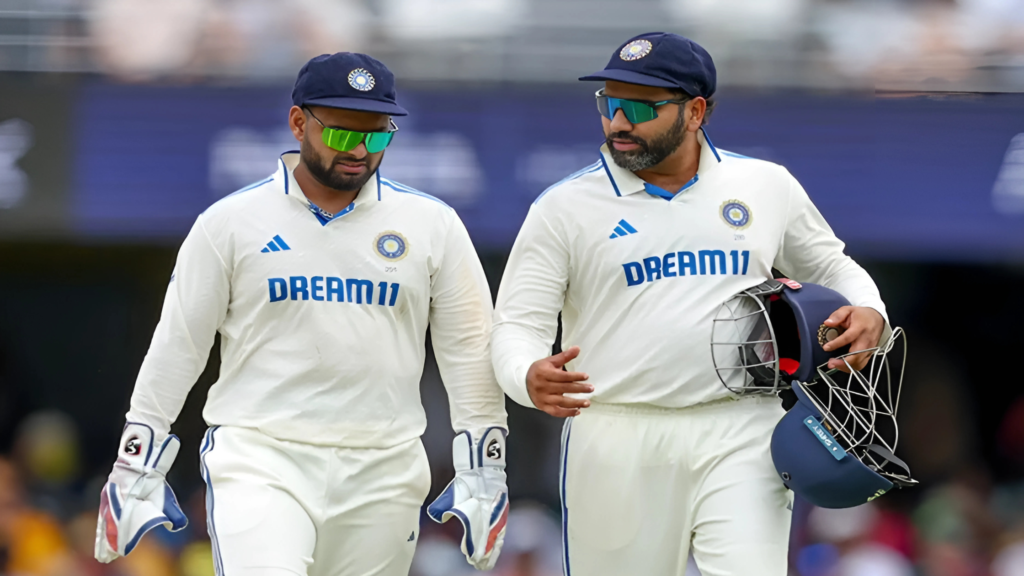
Following India’s defeat at the Melbourne Cricket Ground (MCG) in their fourth Test match against Australia, captain Rohit Sharma discussed the significance of Rishabh Pant’s batting approach. The loss, which came by a significant margin of 184 runs, put Australia ahead 2-1 in the Border-Gavaskar Trophy series. Sharma emphasized the need for Pant to adopt a more balanced batting style that blends aggression with a measure of responsibility and caution, even though India’s performance was impacted by a variety of variables. Pant’s Role and Aggressive Instincts In contemporary cricket, Rishabh Pant has established himself as one of the game’s most energetic and courageous batsman. India has won several matches thanks to his innate ability to counterattack, even in difficult circumstances. Though amusing and sometimes successful, his combative style has frequently come under fire for being careless in circumstances that call for a more measured reaction. At the MCG, Pant’s dismissals in both innings served as stark reminders of how his aggression may backfire. When the team was already struggling, he lost his life in the first innings while attempting to quicken the pace of scoring against an unrelenting Australian bowling assault. Pant entered the game at a crucial juncture as India faced a daunting mark of 468 in the second innings. He tried a risky shot early in his innings, which resulted in his removal, rather than settling in and forming a partnership. Any realistic prospects of rescuing the match were essentially dashed when India’s tailenders were exposed due to their lack of situational awareness. Rohit Sharma’s Perspective Following the loss, Rohit Sharma spoke to the media and offered a thoughtful analysis on Pant’s strategy. Sharma emphasized the significance of striking the correct balance between aggression and caution while acknowledging Pant’s extraordinary potential and his priceless prior achievements. “We’re not requesting that he cease his aggressive behavior,” Sharma stated. Our goal is for him to better judge the circumstances and adjust his performance accordingly. His skill is undeniable, but playing cricket also requires awareness of the situation. The need for players to modify their natural game to fit the requirements of particular match conditions was highlighted by this statement, which highlighted a larger issue with the Indian system. His message to Pant is probably a part of a long-term plan to create a team that is robust and flexible, since Sharma’s leadership has frequently centered on encouraging accountability and discipline. The Cost of Recklessness Pant’s dismissals were not just personal failures; they had a ripple effect on the team’s performance. In both innings, India’s middle and lower order struggled to cope after losing Pant, who is often seen as a linchpin in critical situations. His aggressive approach, when it pays off, can demoralize opponents and shift momentum in India’s favor. However, when it fails, it can leave the team in disarray, as was evident in Melbourne. Critics and former players have weighed in on the issue, with some defending Pant’s natural style and others calling for immediate adjustments. “He’s too good a player to throw his wicket away like this,” said a former Indian cricketer during a post-match analysis. “There’s a time and place for aggression, and Rishabh needs to figure that out quickly.” Pant’s Evolution as a Cricketer Rishabh Pant’s journey in international cricket has been a tale of immense promise punctuated by moments of frustration. He has delivered some of India’s most iconic performances, including the series-winning knock at the Gabba in 2021. However, as the team looks to reclaim its dominance in Test cricket, consistency and situational awareness are becoming increasingly crucial. The conversation around Pant’s approach is not new. The wicketkeeper-batsman has often been urged to refine his shot selection and temper his aggression with a sense of responsibility. With Sharma’s public endorsement of this balanced approach, the onus is now on Pant to evolve as a player and contribute meaningfully in different match situations. Moving Forward As India prepares for the final Test of the series in Sydney, the stakes are higher than ever. A win would level the series at 2-2, allowing India to retain the Border-Gavaskar Trophy. Rishabh Pant’s role in this decisive match will be critical, both as a batsman and as a wicketkeeper. His ability to learn from his mistakes in Melbourne and adapt his game could make all the difference. Pant’s response to Sharma’s call for balance will also be closely watched by fans, analysts, and team management. If he can channel his aggression into calculated risk-taking, he has the potential to become one of the most impact players in the game. For now, the team’s focus remains on rallying together, learning from their setbacks, and putting up a strong performance in Sydney. Conclusion Rohit Sharma’s emphasis on balance and adaptability is a testament to his leadership and understanding of the game. While Rishabh Pant’s aggressive batting style is a vital asset for India, aligning it with the demands of specific situations is essential for both his growth and the team’s success. As Pant works on finding this balance, Indian cricket fans will hope to see him rise to the occasion and deliver when it matters most.
Showdown in Melbourne: India and Australia Compete for Dominance in a Crucial Boxing Day Test
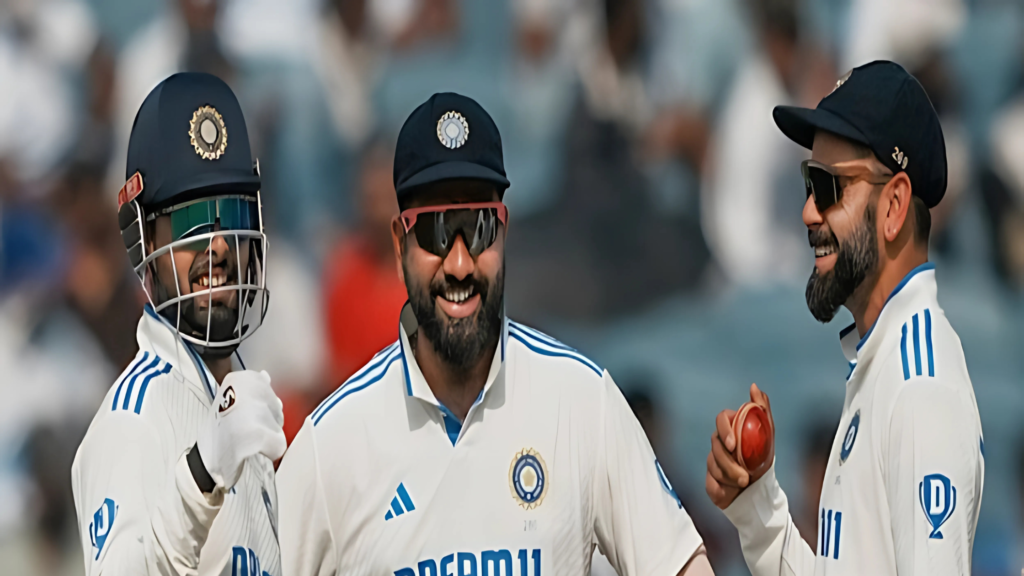
As of December 29, 2024, the fourth Test of the Border-Gavaskar Trophy between India and Australia at the Melbourne Cricket Ground (MCG) is set for an electrifying finish. With the series level at 1-1, the outcome of this match is pivotal for both teams. At the close of play on Day 4, Australia had reached 228 for 9 in their second innings, building a commanding lead of 333 runs over India. Highlights from Day 4 Australia’s Lower-Order Fight back Australia’s innings was bolstered by a resilient 55-run stand for the final wicket between Nathan Lyon and Scott Boland. Lyon stood firm with an unbeaten 41, while Boland contributed a determined 10 not out. Their partnership proved crucial, frustrating the Indian attack and stretching Australia’s lead to a challenging margin for the final day. Indian Bowling Performance India’s bowlers, particularly Jasprit Bumrah and Mohammed Siraj, were impressive. Bumrah reached a remarkable milestone, becoming the joint-fastest Indian bowler to claim 200 Test wickets, matching Ravindra Jadeja’s record of achieving it in 44 matches. Both Bumrah and Siraj consistently troubled the Australian batsmen, picking up key wickets. However, their efforts were undermined by lapses in the field. Fielding Challenges for India India’s fielding was below par, with four crucial catches being put down over the day. These missed opportunities allowed Australia to extend their innings and solidify their position. The Indian team will be mindful of these errors, which could have a significant impact on the match’s final result. Record-Breaking Attendance and Enthralling Action This match has drawn record crowds, with an unprecedented 299,329 spectators attending over four days. The incredible turnout highlights the intense rivalry between the two teams and the importance of the series. Fans have been treated to a gripping contest filled with momentum swings and high-quality cricket. India’s Challenge on Day 5 India faces a monumental task on the final day. To salvage the game, they must either chase a challenging target or bat out the entire day to force a draw. Achieving either will demand tremendous skill and determination from their batting lineup, especially considering the testing pitch conditions and the quality of Australia’s bowling attack. The Series at a Crucial Juncture The Border-Gavaskar Trophy has been a fiercely contested series, with both teams showcasing their strengths at different moments. With the series finely balanced at 1-1, the stakes could not be higher. A victory here would not only secure the series but also provide significant momentum in the ICC World Test Championship standings. As the action unfolds on Day 5, cricket enthusiasts are bracing for a dramatic conclusion to what has been a riveting Test match. This encounter has all the ingredients to be remembered as one of the greatest Boxing Day Tests in history.
